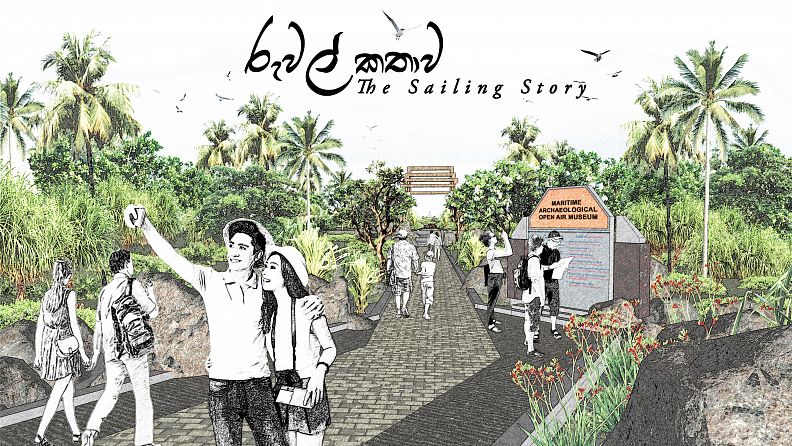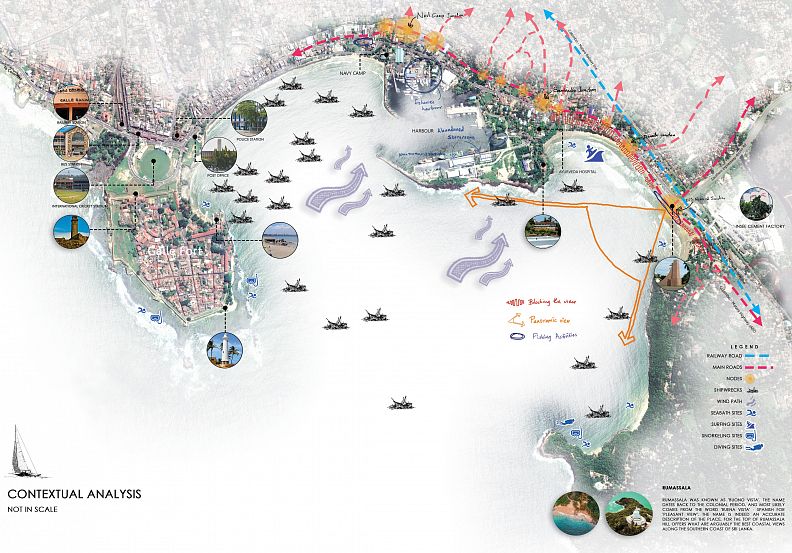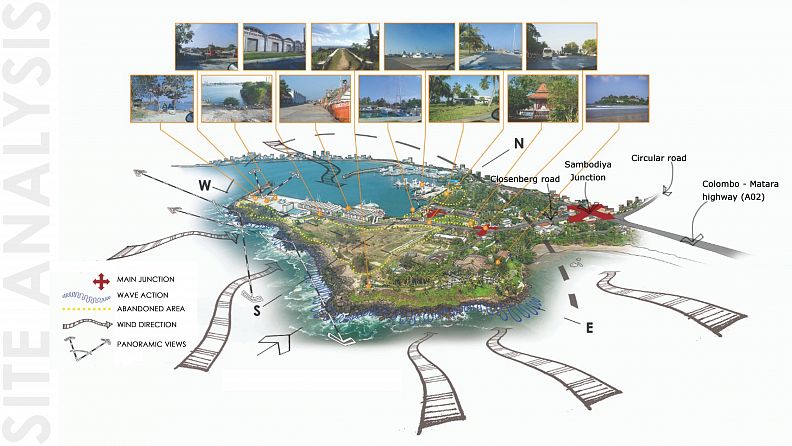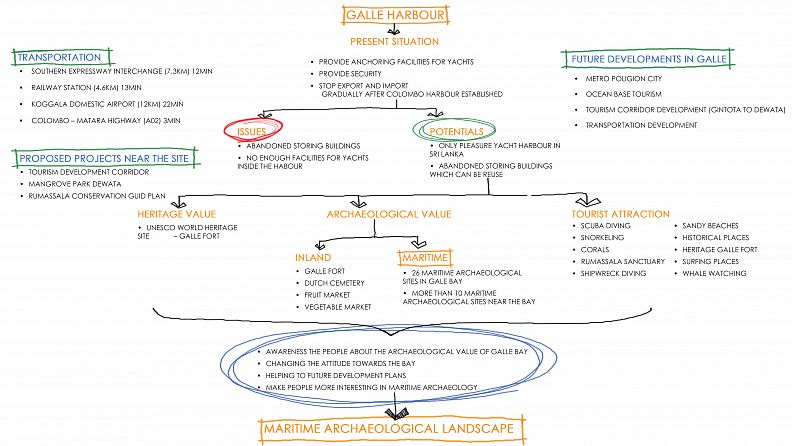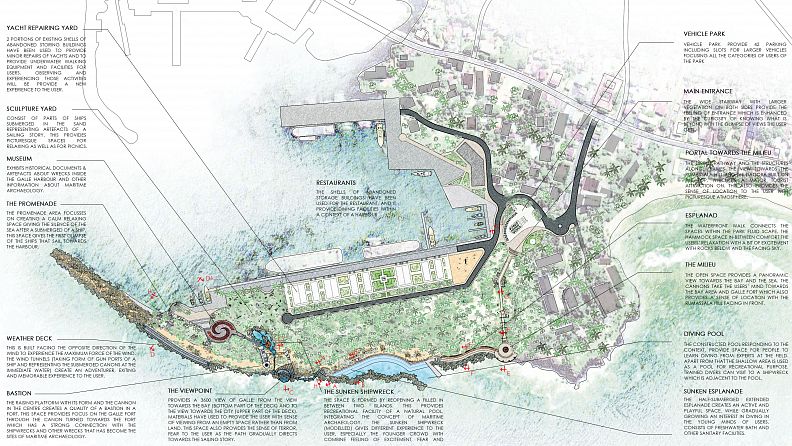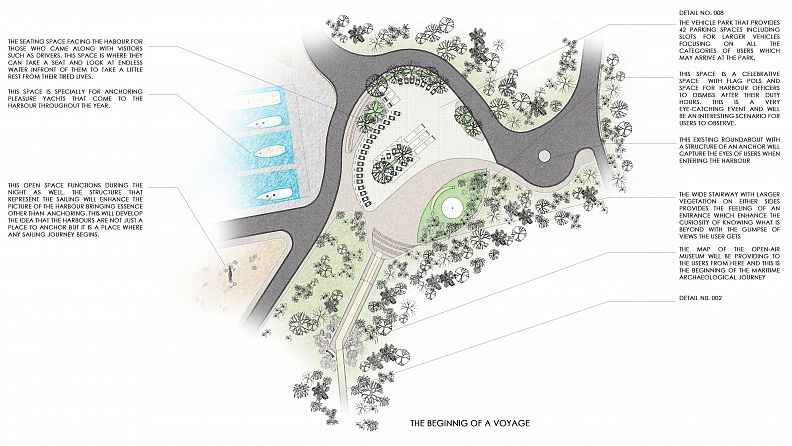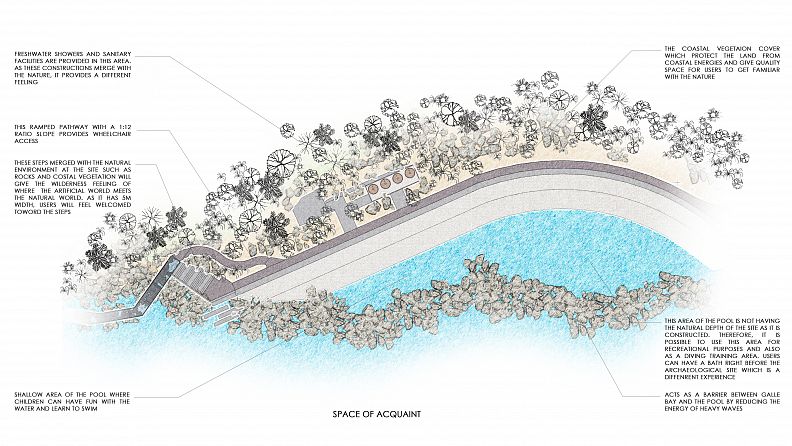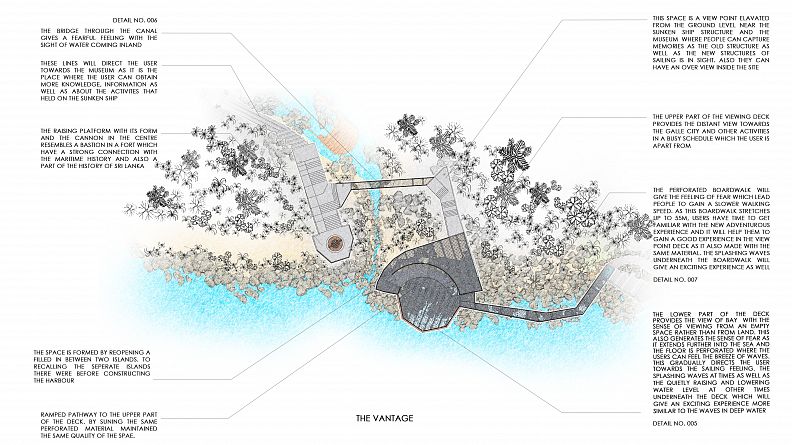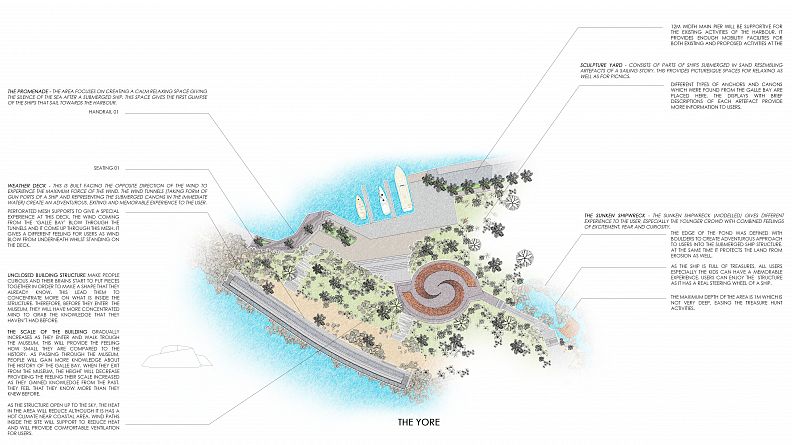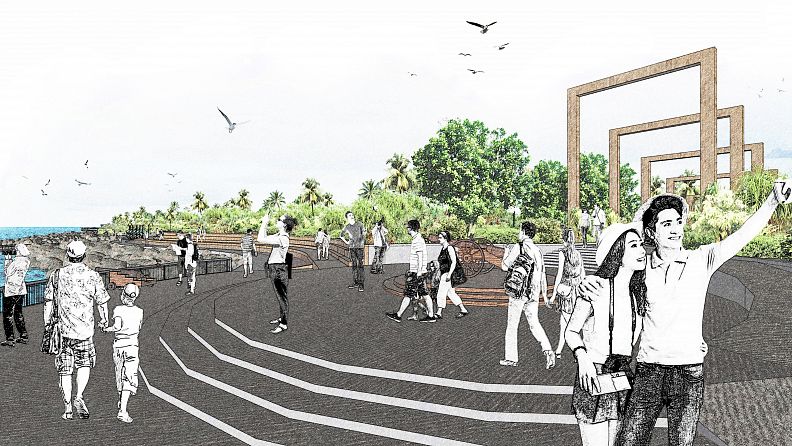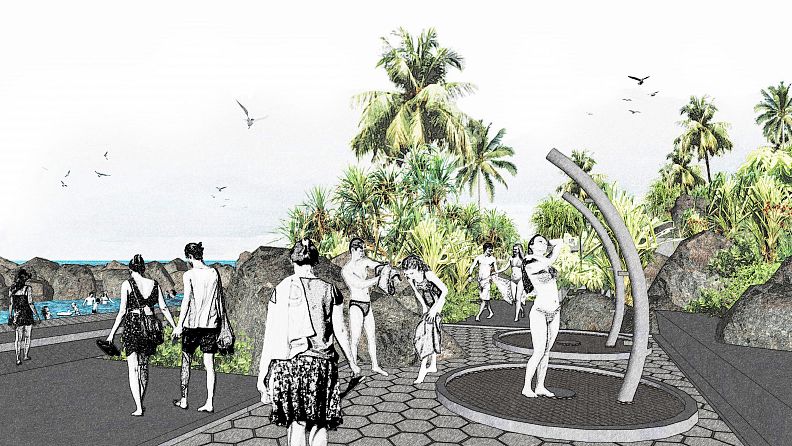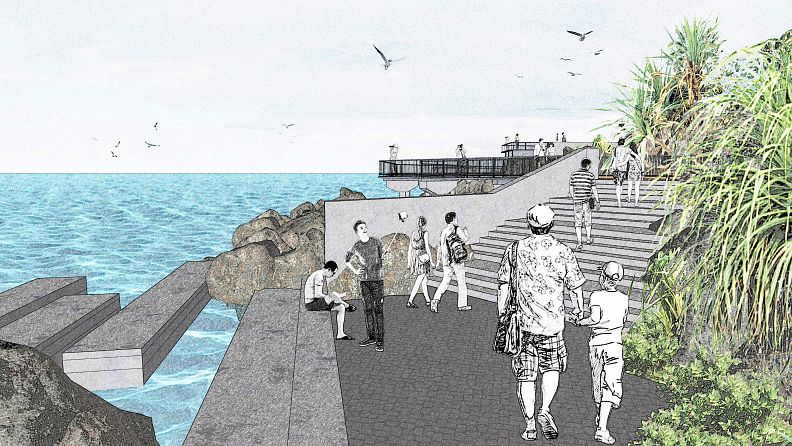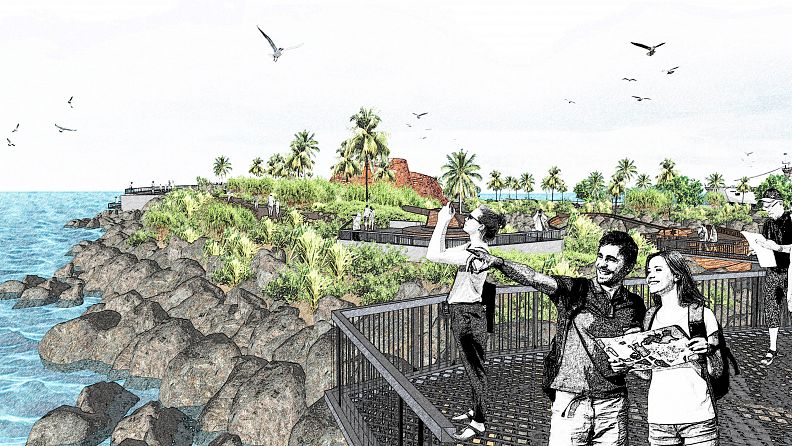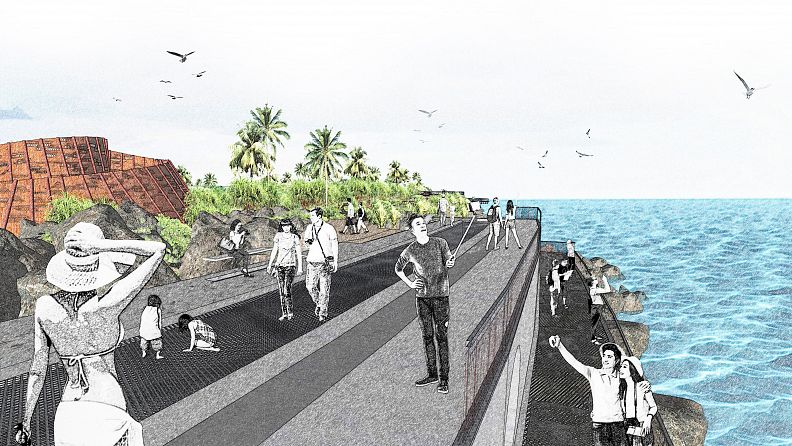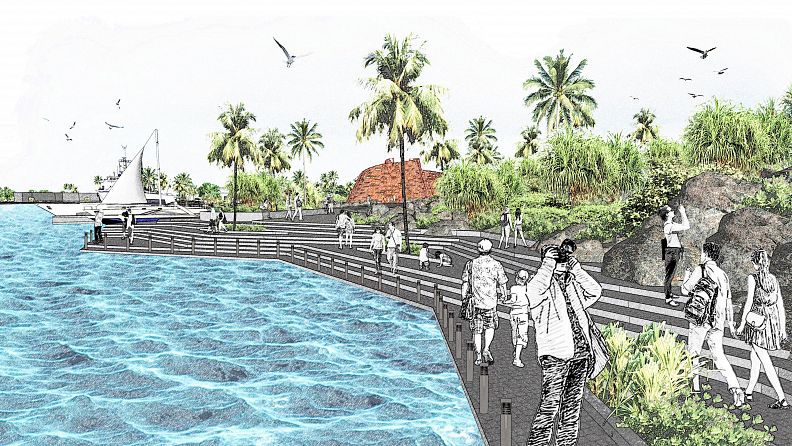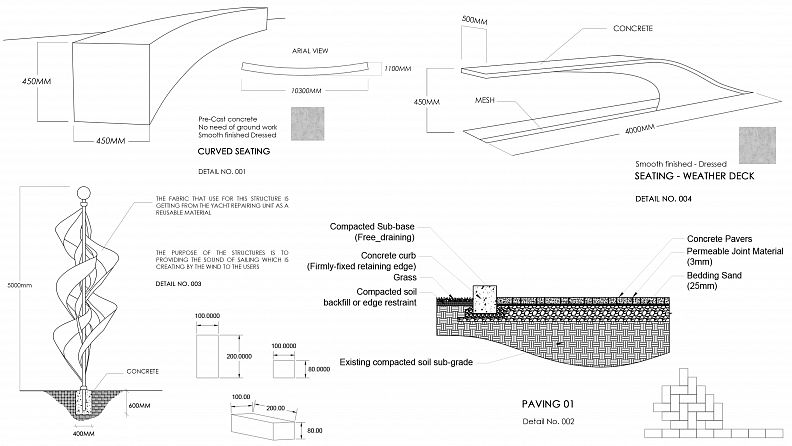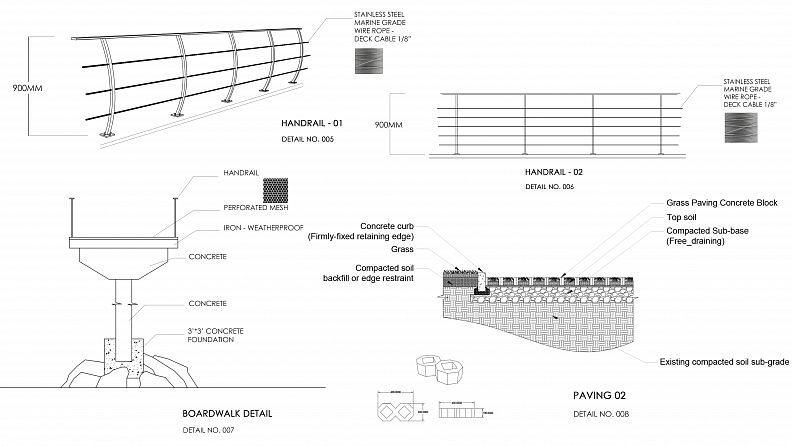DIVE INTO THE PAST - Maritime Archaeological Landscape @ Galle Harbour

Project idea
Introduction
People have been traveling through the oceans long before they began to travel through air. Thus, many harbours were developed around the world. The development of harbours in islands such as Sri Lanka resulted in exposing these islands to the whole world for exploration as well as for export and import businesses. The Galle harbour comprises of such fascinating history over the years of function extending as far as to the 12th century. The UNESCO had recommended the whole area including the Galle bay and the Bayfront to be declared as a conserved area as the world heritage Galle Fort is also a part of the history of the harbour.
The Galle harbour is the only place in Sri Lanka that has this much of archeological sites in one place. Altogether with 4 sites outside and inside the harbour, Galle has around 30 maritime archeological sites where 26 are found inside the harbour. But, in future development proposals for Galle as a coastal tourism area, this maritime archaeology value hasn’t identified as a potential. Thus, some of the archeological sites have the risk of getting destroyed due to some development projects.
Objectives
Overall objective of the project is to mitigate the human and environmental conflict and to create a trend setting landscape to sustain the future development.
The specific objectives of the project are:
• Awareness the people about the archaeological value of Galle bay and make people more interesting in maritime archaeology
• Bringing back the value to the harbour and attitudinal change towards the area
• Connecting tourism zones within the city
• Support national development goals whilst adding value to the Galle city
Vision
The project vision is to change the attitude towards the bay by identifying potentials and providing opportunities to the residents in the way of protecting the bayfront in the future.
Concept - A SAILING STORY
Studying history provide us the opportunity to understand the past mistakes and successes which can be used as an advantage in present decision making as well as it allows us to understand the how the present came to being. The failures are responsible as much as the successes for what the present has become. Hence, the failures and successes of present gestures will result in a different future. It is well-known that the utmost success is not simply a product of all the correct gestures but also the lessons learnt through failures. Therefore, it is important to understand the past in order to success in the future through present gestures.
The stories of the bay shall be revealed to others as same as revealing the history from a grandparent.
The Bayfront has been changing through the years with developments whilst the bottom of the bay remains quietly withholding its stories. The future will be more different than the present use of the Bayfront same as the past was far more different than it is now. A SAILING STORY is an experience moving through changes occurred in the maritime landscape throughout the time broadening the horizon of knowledge.
Project description
The project is Maritime Archeological Landscape which can protect those maritime archeological sites whilst making economic benefits to the harbor.
Throughout the project, the landscape will educate the people whilst enjoying the space and new activities that cannot be experienced at any other place in Sri Lanka. It will change the attitude towards the bayfront and will tend to protect the natural coastal line. More people will enter the field of Maritime Archaeology to explore history and it will enrich our history and learn how we got through our failures towards the achievements until today. The project not only enhance the knowledge, but also provide functions for users with both low and higher arousal levels to motivate them.
Design Spaces:
The beginning of voyage
As the first sight, a structure of an anchor at the middle capture the visitors’ eye implying that they are entering a harbour. Even though the sailing structure at the open space is more visible, the wide stairway on the other hand welcomes the users with curiosity to know where it’s going to lead them despite how they arrived here. They start their voyage by looking at the map. Whilst observing the map, they can see the structure of the museum from far. As the pathway leads to the bay through framed sight of the famous peace pagoda in Rumassala, it gives visitors the first hint on their current location.
The mileu
The path with the far sight of peace pagoda actually lead them to a space with a large cannon suddenly being exposed to the bay with almost 180 degrees angle of sight is increase the curiosity. The visitors are able to observe through the provided binoculars in order to gain a better understanding of the surrounding. Visitors spending more time exploring in this space are able to use the steps for seating through their stay.
As they learn they have reached the closest place to a shipwreck they could arrive whilst being on land, next space welcomes them to a relaxing area. The different posture of laying here instead of continue being up straight, the visitors are gaining an unusual but relaxing experience. The sight of blue sky from above and hearing the sound of weaves splashing, attract their minds making them relaxed with a feeling of floating between the sky and the ocean.
The sail structures in proximity of the pathway are constructed using the actual materials which used to create a sail. The sound they produce standing against the wind encourage the visitors to continue their journey.
Space of acquaint
The pool area recreated with different depths provides the opportunity for all types of swimmers from novice to professionals as well as from children to adults to enjoy their time in water making them familiar with the sea. The sights of divers and their activities encourage and interest others towards gaining diving experience and explore the shipwrecks as well as the underwater beauty hidden from their current sight.
The vantage
The perforated boardwalk triggers the unsafe feeling in visitors’ minds leading them towards a more adventurous journey. The viewing deck exposing a wide angle of sight towards the ocean increase curiosity as well as the busy city that remind them of their usual busy lives and what it is like to be relaxed whilst having a different experience. The splashing water from underneath give them the feeling of a sailor.
The structure of a sunken ship on one side provides the opportunity for the visitors to experience a sunken ship whilst the bastian with a cannon on the other side welcomes them to a familiar space as they have been to a place with cannons before. The absence of seating discourages visitors to spend longer period of time at this space and as they learn this place is also a closer location to more shipwrecks, the sandy trail makes them excited to explore further down the path.
The yore
The far end opening up to the ocean is the location on site which faces the strongest winds. The structure represents the hall of a ship with two floors where the lower floor is created with spaces for carrying cannons. The partially perforated layer between the floors generates the feeling of relationship between sailors in upper and lower floors of a ship for the first time at the site.
Next, the visitors are led towards the museum where they can learn the history hidden under water. At the entrance, the much taller structure gives the feeling of visitors being smaller which make them realize how little they know. The structure increase this feeling as passing through the museum, whereas by the time they exit the visitors are actually with a better understanding on how massive the history is, making them curious for more knowledge. The knowledge already gained is satisfying to their minds where their happy minds encourage them towards further investigations, experiencing the shipwrecks by diving as well as spending more time at the site exploring with the curious and adventurous minds.
Technical information
Planting Concept
As the site is situated near the coastal area the temperature and humidity are higher at the site relatively to other spaces around the site. Therefore, plants that can provide enough shade were selected to the design by referring to existing plants and site conditions. Hence, variety of plants which tolerate coastal conditions are used to raise peoples' awareness about the coastal environment through soft landscape elements while protecting land form from the coastal energies (wind, waves).
Vision: • To respect the natural ecosystem at the site to protect the bayfront from the coastal energies.
• To create a place where can change the current attitude of residential users at the site towards the beach area.
• Recalling the bayfront in the early years as it was in a more natural state.
Material Concept
The site is situated in a coastal area where temperature and the relative humidity is higher than other areas near the city. However, as the wind flow is continuing, the heat of the site is not uncomfortable to use at daytime. Therefore, materials were selected according to the climate in the site and its unique characteristics of the context. Minimum material changes were used to design both trails and structures.
Lighting Concept
As the design is inside the harbour two main things were considered whilst illuminating the site.
• Not to disturb the regular habour functions
• Provide safety whilst site on the edge of deep water
As the design is accessible during the day time except restaurant area, there were no luminaires other than emergency lightings in the design.
In the restaurant area;
• The lights used for the pathways are small bollards that lit up only the pathway without disturbing the uses of the area.
• The trees are light up with flood lights to focus the visitors to the texture of the tree. And also, the moon light effect is given to give the feeling of walking under the moon.
All the light fittings of the trees are located near the tree itself and other pathway lights are situated on the pathways. All the fittings have been hidden from the visitors for the protection of the visitors and the fittings.
All the fittings are in IP68 level because the site is located in coastal zone, which is rich with salty winds and vapours around the light fittings.
